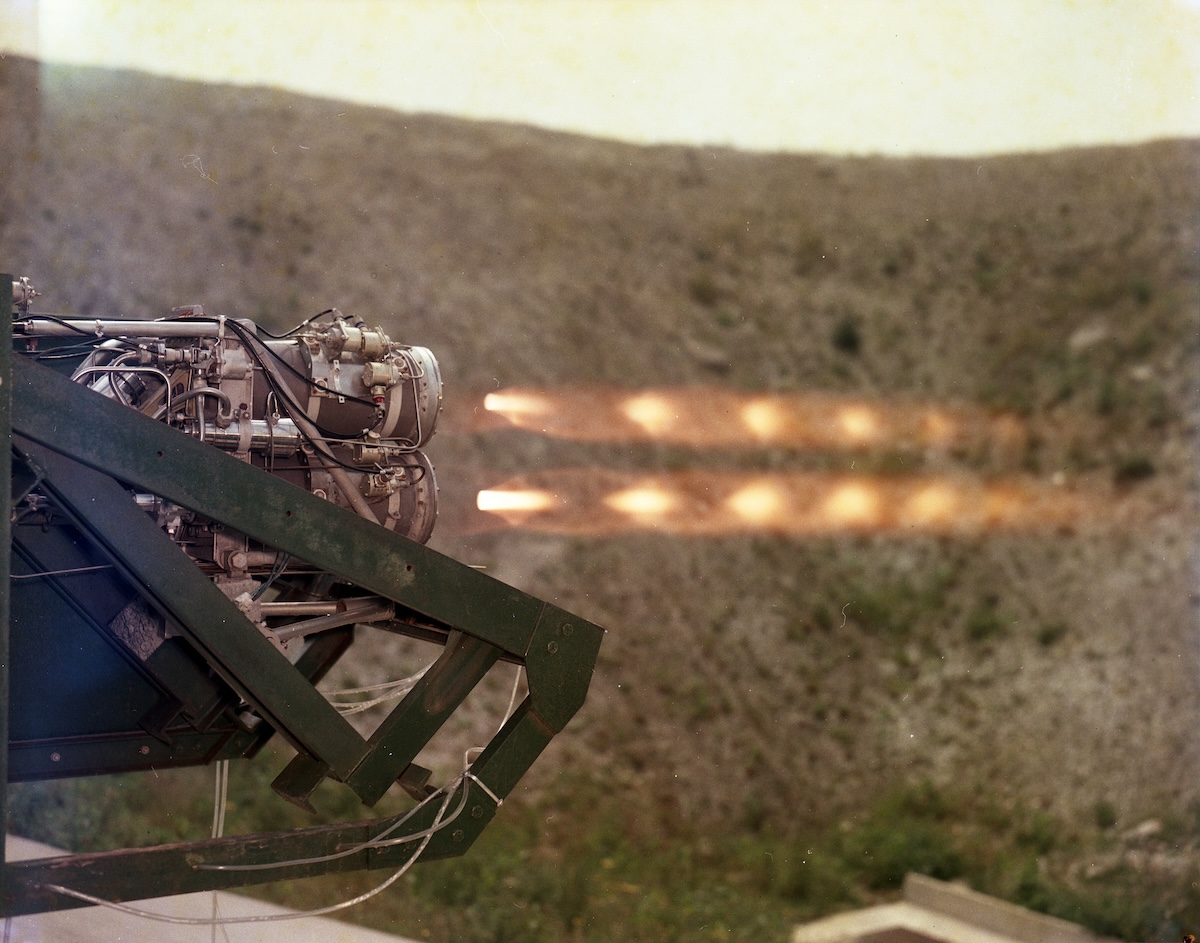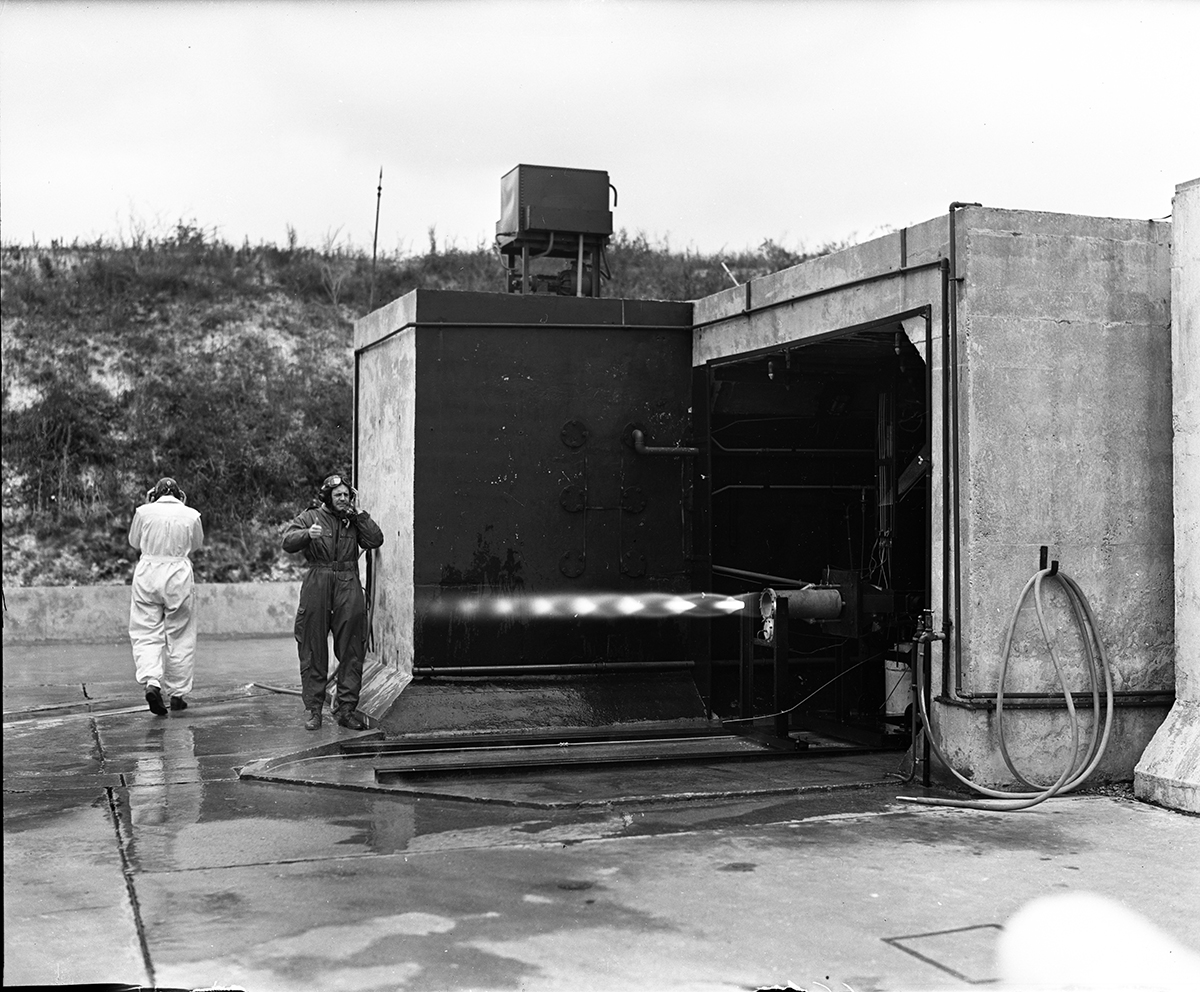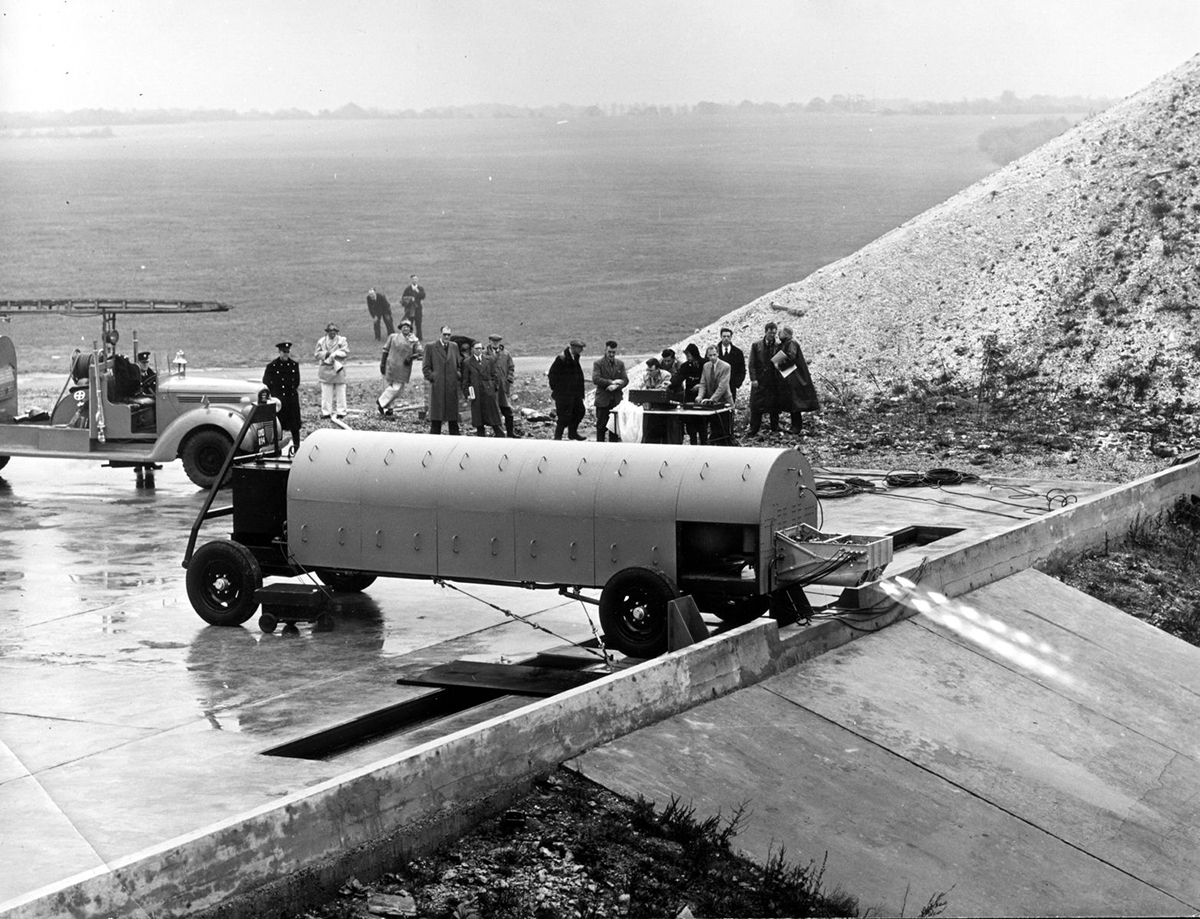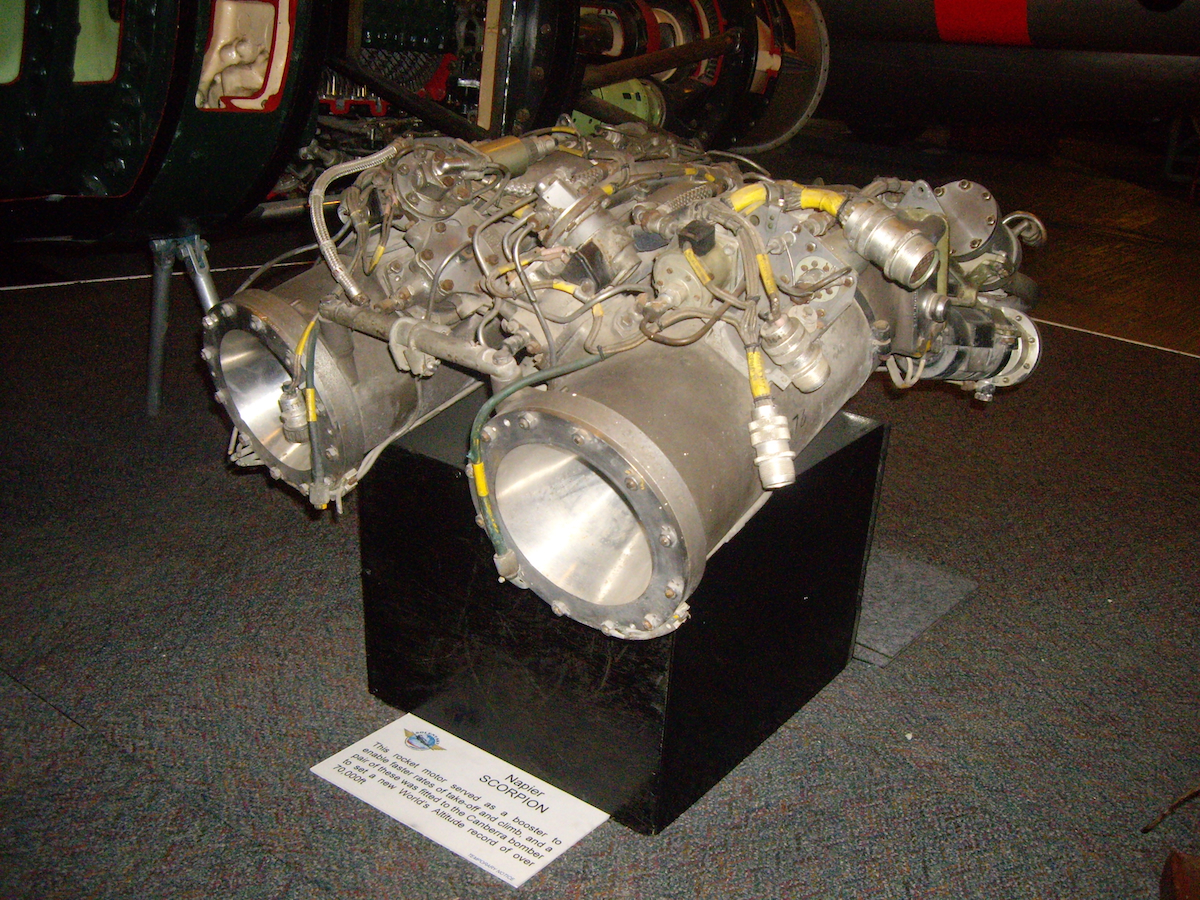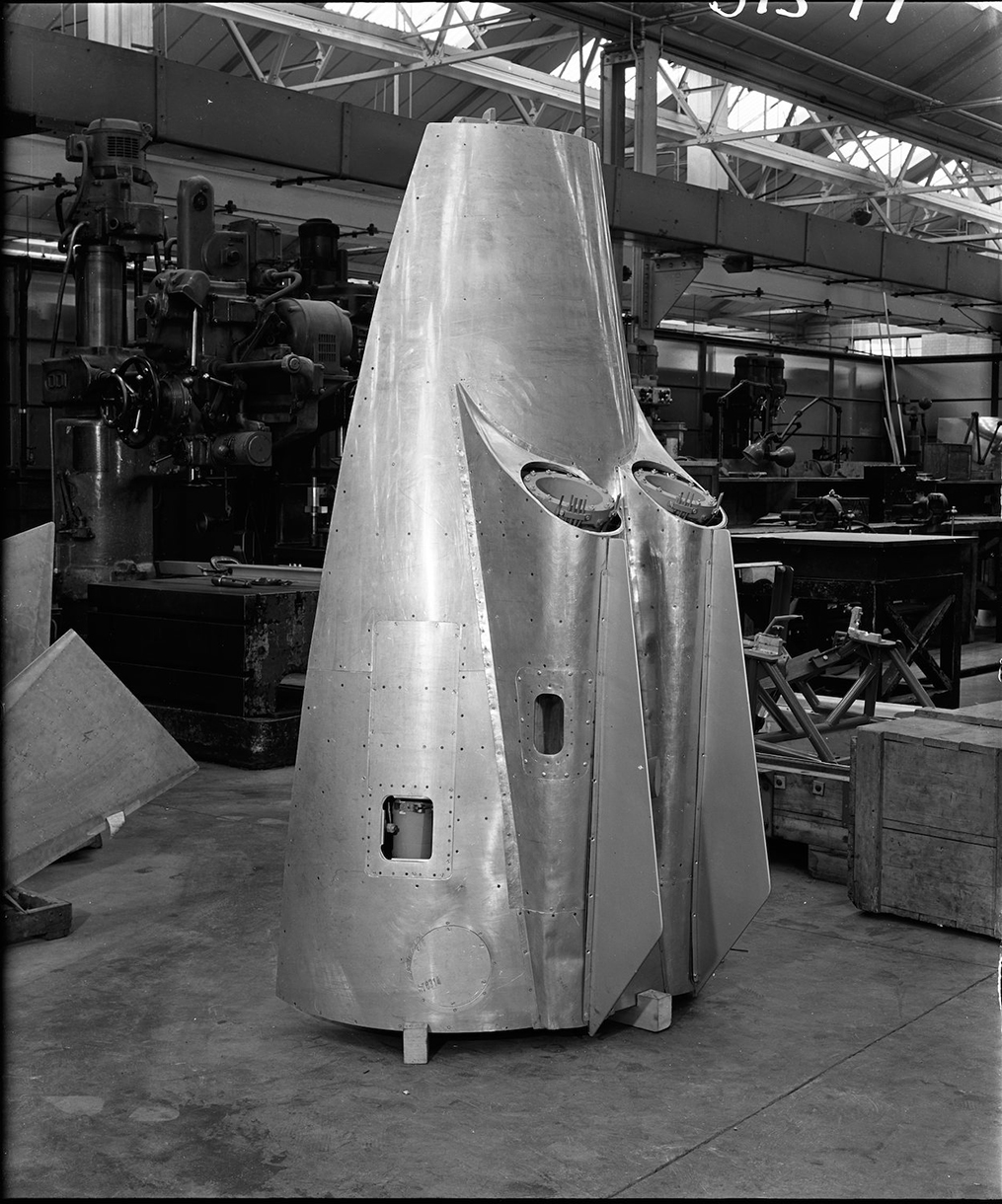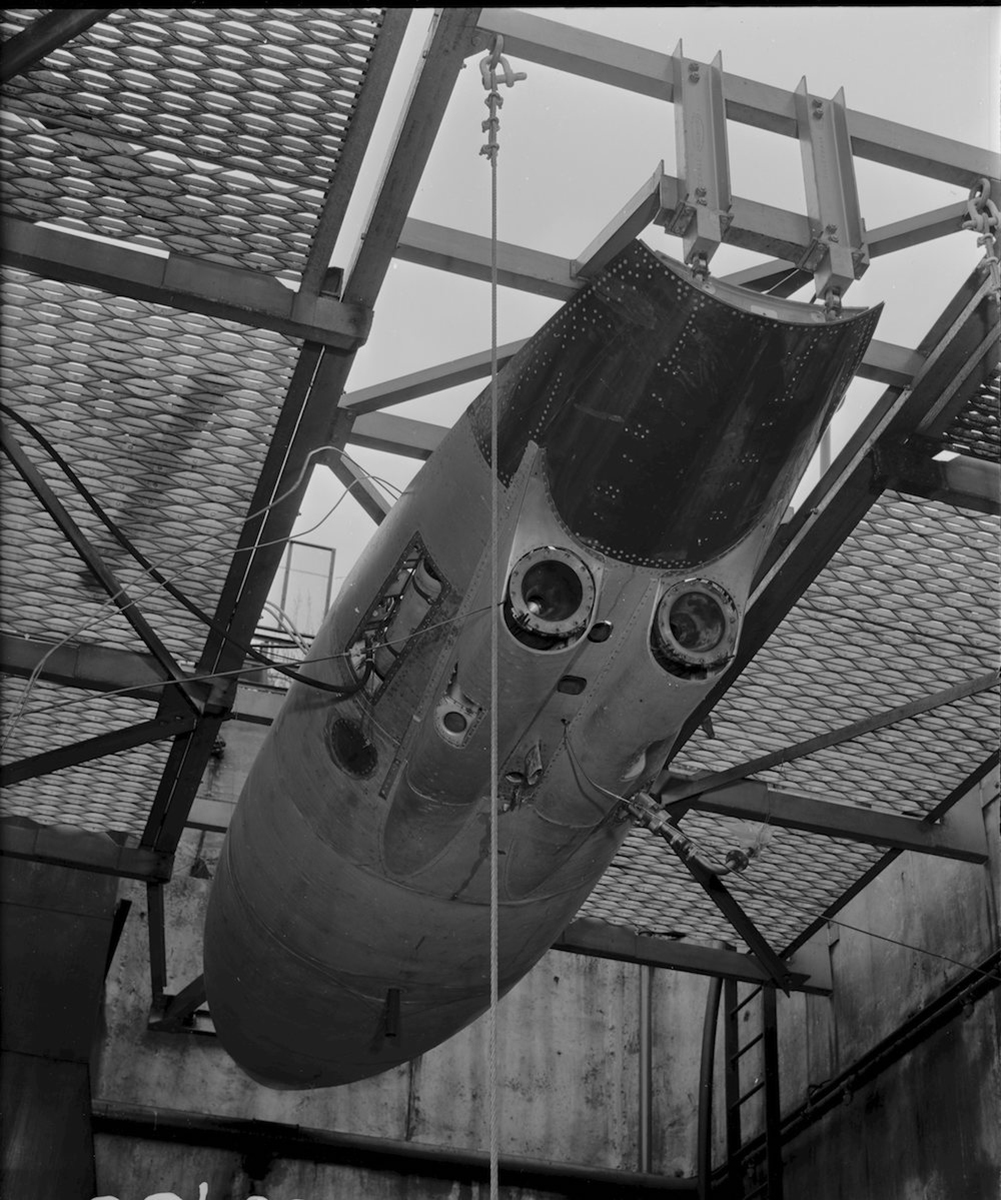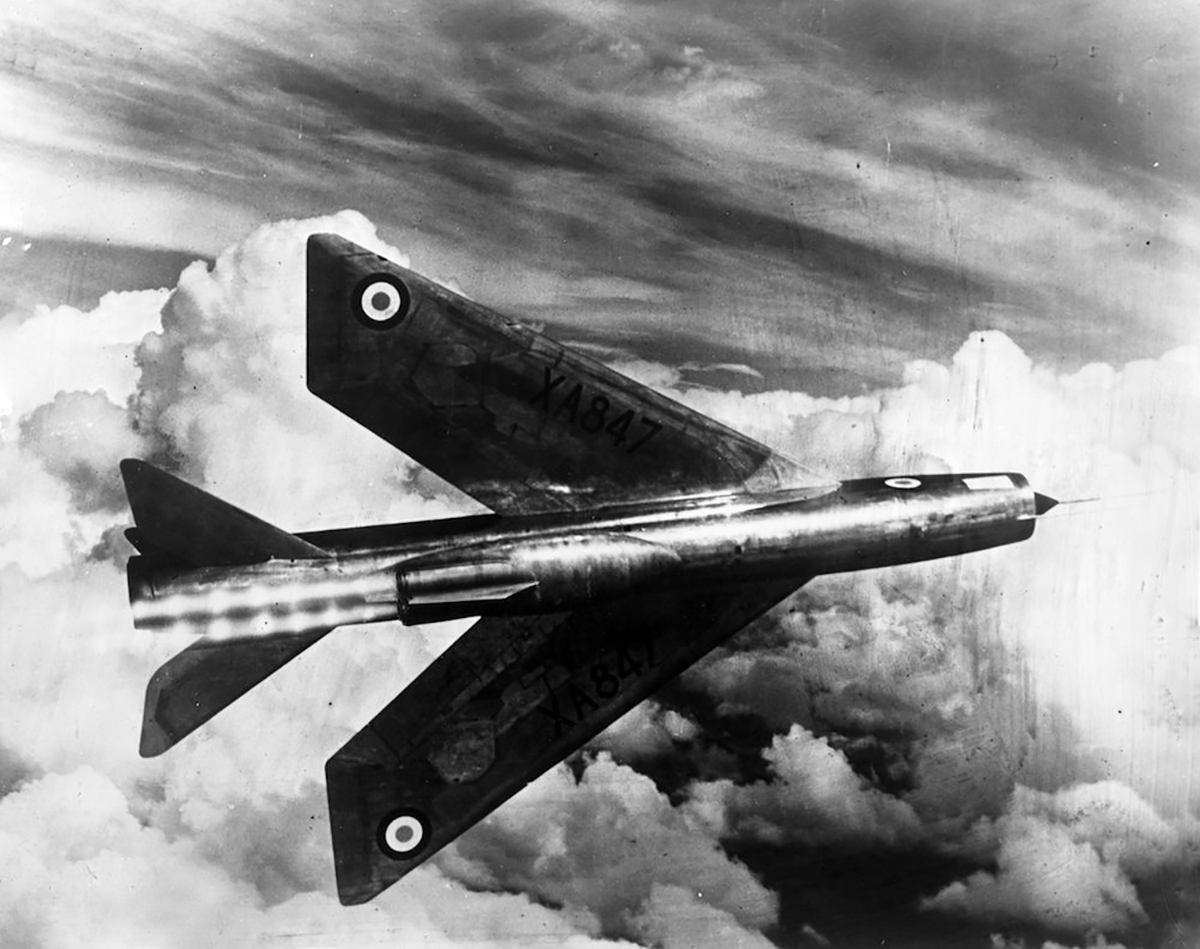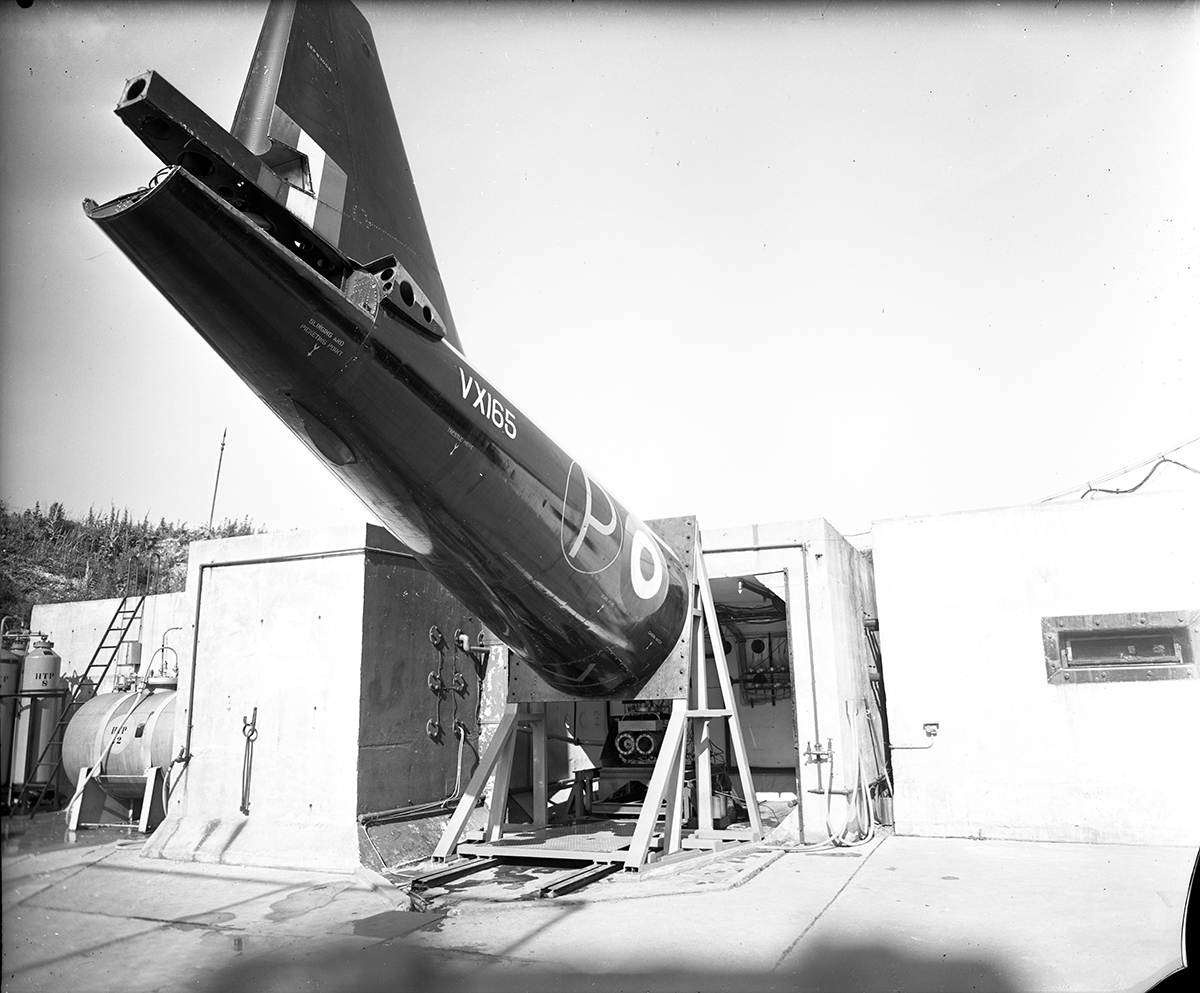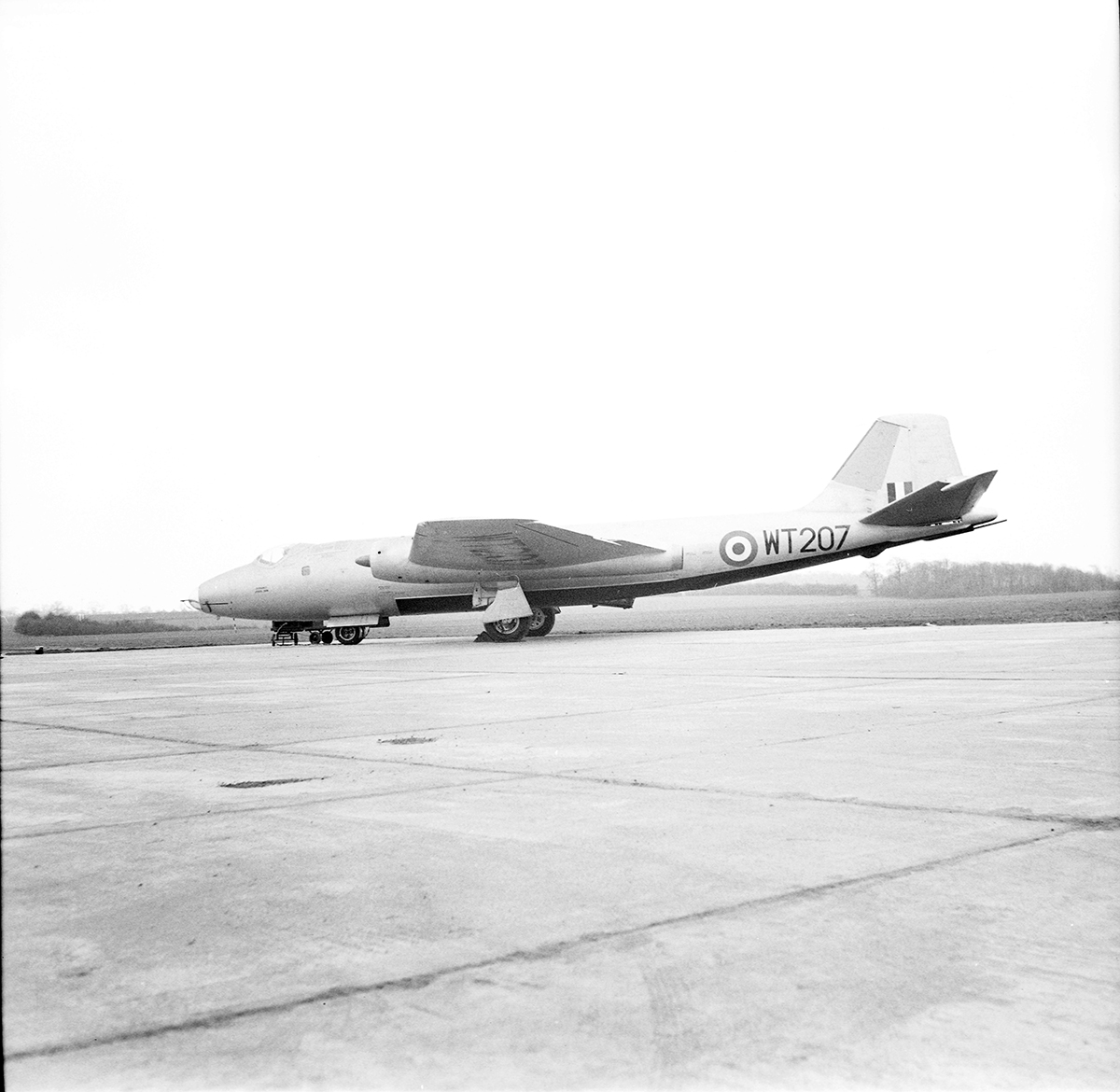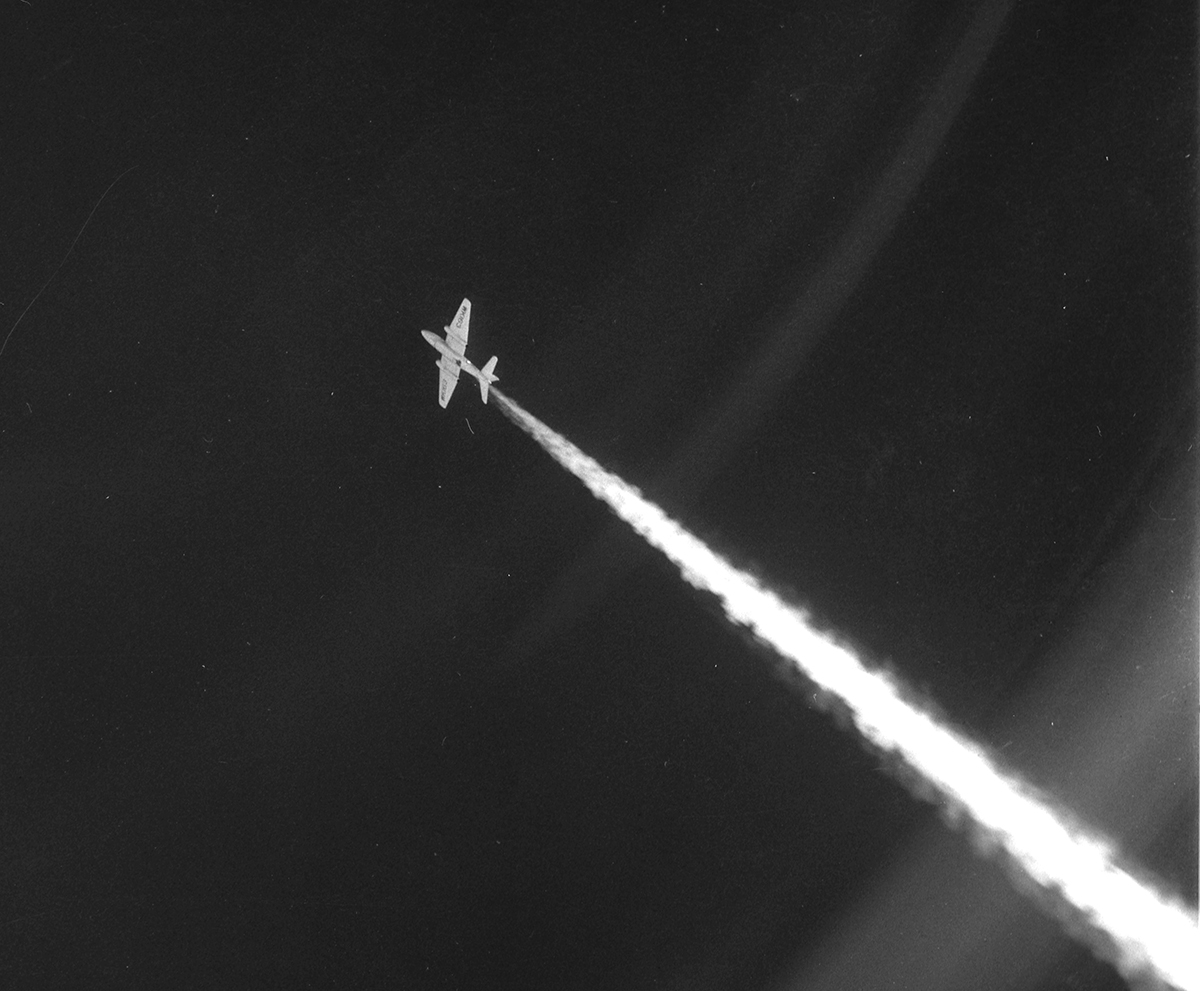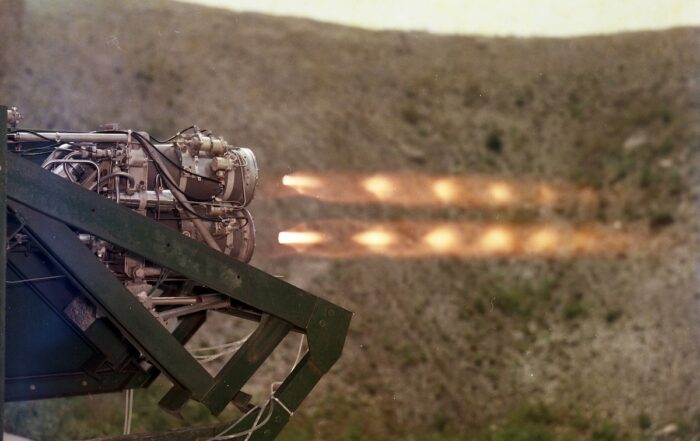Napier Scorpion Rocket Motor
Since rocket engines carry their own oxidiser there is no requirement for any external input to drive the engine. The Napier Scorpion engine was designed for use in R.A.T.O. or Rocket Assisted Take-Off for heavily loaded aircraft. It could also take-over when gas-turbines were running out of air to compress! As such they could also come into their own assisting aircraft to climb quickly above 50,000′.
The NRE 14 Napier Single Scorpion rocket engine followed the same general principles of the earlier NRE series missile rocket engines which Napier’s Flight Development Establishment at Luton built for the Ministry of Supply. Structurally, however, they were very different engines. Whilst the NRE missile engines were built for a short life, the Napier Scorpion aircraft engines were specified to sustain many hundreds of firings. Also, their main components could be removed and replaced without so much as breaking a pipe line. These rocket engines use High Test Peroxide (H.T.P.) as the oxidant and standard turbine kerosene or gasoline as fuel. This had the added advantage of not requiring special fuel tanks since the rocket could draw upon the aircraft’s own supply. The combination of H.T.P. oxidant and fuel was self-igniting and, unlike other combinations, did not require a high-energy spark plug or other type of ignitor to start combustion. It was also safer, because the H.T.P. acted as a purge to prevent the accumulation of fuel in the combustion chamber.
The engine was started by passing a supply of H.T.P. through a catalyst which decomposed it into free oxygen and super-heated steam. This drove a small turbine with a double-ended shaft. One end of the shaft carried the oxidant pump and the other the fuel pump so that the relationship between the two flows remained constant at all speeds. The sequence was so timed that the main oxidant flow began before the fuel flow. After leaving the pump, the oxidant passed through a cooling jacket round the combustion chamber, and then through a catalyst which decomposed it into free oxygen and super-heated steam. This entered the combustion chamber and created the right conditions of temperature and pressure for the ignition of the fuel. Before entering the combustion chamber, the fuel was used to cool the burner head. When the rocket engine was shut down, the fuel flow stopped first allowing the H.T.P. to purge the combustion chamber ready for the next firing. The Scorpion could be stopped and started any number of times at any altitude so long as fuel and oxidant remained available.
Three types of Napier Scorpion engine were developed.
NSc.1 – Initial single chamber development engine, developing 2,250 lb. thrust.
NScD.1 – Double chamber engine, developing 4,500 lb. thrust.
NScT.1 – Triple chamber engine, developing 6,750 lb. thrust.
Ultimate responsibility for the rocket development programme fell upon the manager of Napier’s Flight Development Establishment, Mr C.L. Cowdrey. Another member of the Luton Staff who has had close association with the Scorpion’s development was Mr K.H. Greenly, the F.D.E.’s Chief Engineer. Design work was headed by Mr E.W. Davies, the Chief Designer of the Flight Development Establishment. Walter Shirley was Deputy Chief Engineer of Napier’s Flight Development Establishment and his working career began at the Royal Aircraft Establishment, Farnborough, where he was a Scientific Officer specialising in fuel and oil systems and the flight development of power plants. He joined Napier in 1947 and became a member of the rocket design team at Luton in 1949. In 1952 he was appointed Chief Technician, in 1956 Chief Development Engineer in charge of Scorpion engine development and design. He, probably, contributed more to the development of the Scorpion rocket engine than anyone else.
The Napier Scorpion rocket engine was originally intended for use as a ‘high altitude booster rocket package’ installed in the English Electric P1B Lighting. They were paired in NRE 15, giving the ‘booster package’ a total of 4,500 lbs of thrust. A single rocket engine was also proposed for fitting in the Gloster Javelin. The Double and Triple chamber engines were designed so that each chamber could be fired independently providing different levels of thrust. The Triple Scorpion was proposed for use with aircraft or with guided missiles however it was never flown.
The English Electric Canberra was chosen as the test vehicle with WK163 being the first. Subsequently the tail section of VX165
On 28th August 1957 an English-Electric Canberra (WK163), with Double Scorpion installed to support the oxygen starved Rolls-Royce Avon, was propelled to a new World Altitude Record of 70,310′ (an incredible altitude of 13.5 miles). The Double Scorpion was fired from 45,000′ whilst maintaining a steep climb to achieve the record. This was literally the pinnacle of the 150 year old Company’s success.
The Napier Scorpion rocket engine was originally intended for use as a ‘high altitude booster rocket package’ installed in the English Electric P1B Lighting. They were paired in NRE 15, giving the ‘booster package’ a total of 4,500 lbs of thrust. A single rocket engine was also proposed for fitting in the Gloster Javelin. The Double and Triple chamber engines were designed so that each chamber could be fired independently providing different levels of thrust. The Triple Scorpion was proposed for use with aircraft or with guided missiles however it was never flown.
The English Electric Canberra was chosen as the test vehicle with (B2) WK163 being the first. Subsequently the tail section of VX165 was used for ground testing. WK163 was flow extensively and appeared at the Farnborough airshow. Later Canberras (B6) WT207 and WT208 were fitted with Double Scorpion rocket engines for high altitude atmospheric sampling over Christmas Island after a nuclear test. Three days before the test, on 9th April 1958 the Double Scorpion of WT207 exploded during a test flight at 56,000′ over Monyash in Derbyshire destroying the aircraft. There were no fatalities but the crew ejected at 54,000′ and was recorded as the highest-ever ejection from an aircraft! WT208 was grounded during the Christmas Island test until the cause of WT207’s accident was known (a suspected O-ring failure), and was subsequently returned to the UK and de-modified.
The Napier Scorpion engine was intended to take-over when gas-turbines were running out of air to compress! As such they really came into their own above 50,000′. On 28th August 1957 an English-Electric Canberra (WK163), with Double Scorpion installed to support the oxygen starved Rolls-Royce Avon, was propelled to a new World Altitude Record of 70,310′ (an incredible altitude of 13.5 miles). The Double Scorpion was fired from 45,000′ whilst maintaining a steep climb to achieve the record. This was literally the pinnacle of the 150 year old Company’s success.
Recent Posts
The Napier Scorpion – Napier’s Last Record Breaker
On 28th August 1957, Napier’s Chief Test Pilot, Mike Randrup, flying English Electric Canberra WK163 fitted with a Napier 'Double Scorpion' aircraft rocket engine, reached an altitude of 70,310', beating the previous record, also [...]

